~Lesson 5~
Our Surroundings: Taking a Critical Look Around
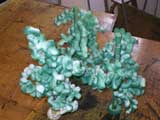 |
 |
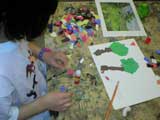 |
LESSON
RATIONALE:
In this lesson, the students will look examples of Paul Cézanne’s
work. I chose Cézannes work, because in his landscape paintings, he
took great care looking at his surroundings, I want the kids to think about
this, and think about their surroundings. The goal is to make the children
stop to think about what is surrounding them everyday that they might take
for granted, including nature, animals, houses, buildings, and cars.
GOALS
AND STANDARDS:
- 9.1.3 A – know and use the elements and principles of each art form
to create works in the arts and humanities
- 9.1.3 G – recognize the function of rehearsals and practice sessions
- 9.2.3 B – Relate works in the arts to varying styles and genre and
to the periods in which they were created
LEARNER
OUTCOMES:
* Students will learn about Cézanne and the Impressionism work that
he did, discussing mostly his works of Mont Sainte- Victoire, because he was
critically thinking about his surroundings in this paintings.
* Students will come up with a list of things that they see around them on
a day-to-day basis.
* Students will produce a sketch for what they want to include in their landscapes.
* Students will then create 8 by 11 works with torn construction paper pieces,
which will include elements of their surroundings, by using the torn paper,
it will help them think about how Cézanne used larger areas of color
in his work.
* Students will also produce a tree to be included in the city made wire and
packing peanuts, they will think about nature, and how we can create a representation
of nature out of garbage, and the idea of reusing things. They will be made
of wood dowels, with wire and packing peanuts. They will look like pine trees,
and will be finished by spray-painting them green.
MATERIALS NEEDED FOR LESSON:
A. Teacher Materials
-Digital camera (for documenting)
-Video camera (for documenting)
-Examples of projects
- Prints of Cézanne’s work
- Art Terms list- including Cézanne, Impressionism, Nature, surroundings/
environment,
B. Student materials
-Paper
-Pencils
- Wire
-Packing peanuts
- Wood dowels for tree trunks
-Markers, colored pencils and crayons
- Construction paper
- Glue sticks
LESSON
PROCEDURES:
A. Starting the Lesson:
Students will enter the classroom and work in their sketchbooks until the
whole class has arrived. Followed by discussion and questions about their
environment, we will make a list of things that they see in their environment
everyday. I will then move into a discussion about Cézanne, and his
work, and how he really thought about his surroundings, and how he used color.
B. Organizer
I will do a demonstration of both parts of the lesson, so if they finish one
part, they will be able to move on. The students will be instructed on how
to make their tree, and then explained the torn paper project in which they
will first do a sketch and talk about it with either Susan or myself and then
they will start on their final piece.
C.
Lesson Sequence
Time/Teacher Teacher Action Student Action
9:00-9:15 am Distribute sketchbooks and tee shirts and encourage students
to work on either one. Talk about last week’s lesson on fish and their
environment, and start to talk about the environment we live in. Students
will work in sketchbooks and on tee shirts, and participate in the discussion.
9:15-9:25 The teacher will gather the students on the carpet square and start
talking to them about Cézanne, landscapes, and give demonstrations
of the days projects. Students will listen to the teacher’s explanations
and participate in discussion about their surroundings, and be encouraged
to ask questions about the projects.
9:25-10:00 Teacher will give students materials to create their trees, and
when they are finished, they will start their sketching for their torn paper
piece. Students will create their trees, and then will start their sketching
for their torn paper piece.
10:00-11:00 Teachers will talk to students about their sketches and give them
suggestions. Students will talk to the teacher about their sketches and what
they decided to put in them, and then start on their final piece.
A.
Closure of Lesson
This lesson will close with the children finishing up their projects, the
lesson on their environments will lead into Michelle’s lesson on architecture.
B.
Transition to Next Lesson
This lesson will be a good transition because Architecture is part of our
students surroundings, and they will be relating to that in the next lesson.
II.
ASSESSMENT OF STUDENT LEARNING
Students will discuss what they think important aspects of their surroundings
are. The teacher will gage the students progress through group and individual
discussion as will as by evaluation their work and the progress they have
made throughout the previous class periods.
III.
EVALUATION OF LESSON AND LEARNING ACTIVITIES
While all of the activities raise questions and exploration and environment
and surrounding. Students will be encouraged to relate all of the information
and projects to their own lives and interests. Based on their discussion along
with how they complete their work.
IV. REFERENCES:
Notes on Cézanne from my French art history class
A variety of Cézanne’s work including Mont Sainte Victoire.
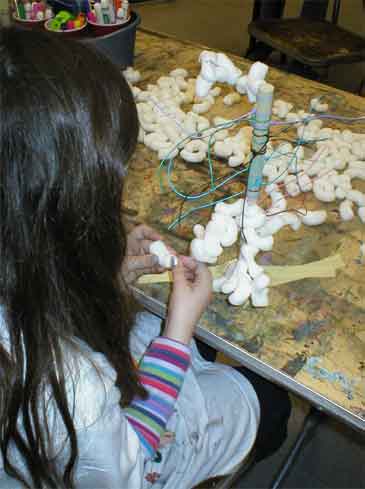 |
 |
 |
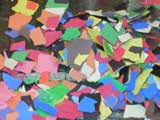 |
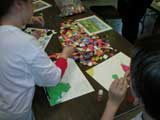 |
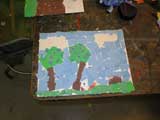 |